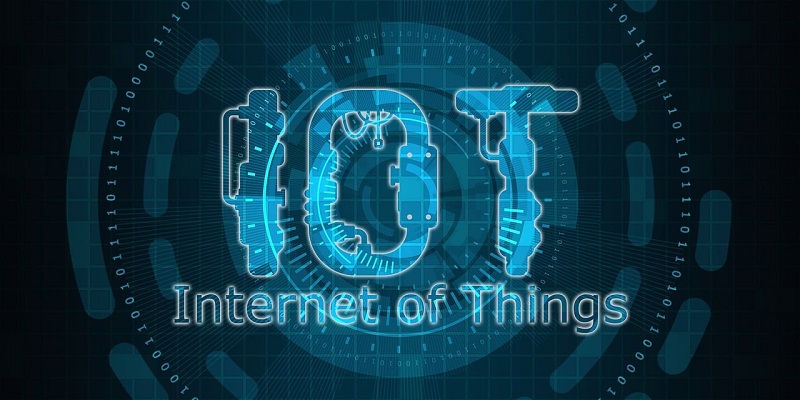In today’s rapidly evolving digital landscape, the Internet of Things (IoT) emerges as one of the most significant technologies driving digital transformation. IoT, with its ability to connect and gather data from various devices, offers immense potential for businesses to optimize their operations, enhance customer experiences, and drive innovation. However, the adoption of IoT for digital transformation is not without its challenges. From data management and connectivity issues to concerns about security risks, organizations must navigate these obstacles to fully leverage the benefits of IoT. In this article, we will explore the challenges of adopting IoT for digital transformation and outline strategies to overcome them.
Challenges in Adopting IoT for Digital Transformation
As organizations consider embracing IoT as part of their digital transformation journey, they must address several key challenges. First and foremost is the effective use of data. IoT generates a massive amount of data, and organizations must develop a robust data strategy that aligns with their business objectives and specific use cases. Without a clear data strategy, organizations risk becoming overwhelmed with unmanageable datasets that do not deliver meaningful insights.
Connectivity is another critical challenge when implementing IoT. IoT devices require seamless connectivity to transmit and receive data in real time. Organizations must ensure a stable and secure network infrastructure that can handle the increased data traffic. Additionally, interoperability between different IoT devices and systems can be complex, requiring standardization protocols and integration efforts.
Furthermore, organizations must carefully assess and mitigate the risks associated with IoT adoption. These risks include data privacy, device security, and potential disruptions due to system failures or cyberattacks. Therefore, organizations need to incorporate robust security measures to protect their data and ensure the integrity and reliability of their IoT systems.
Developing a Data Strategy
To effectively leverage IoT for digital transformation, organizations must develop a comprehensive data strategy. This strategy should encompass data collection, storage, analysis, and utilization. It should align with the business objectives and use cases specific to each organization. By establishing clear guidelines on how data will be collected, processed, and utilized, organizations can avoid data overload and extract valuable insights to drive decision-making and process improvements.
Evaluating Infrastructure Suitability
Before embarking on an IoT project, it is crucial for organizations to conduct a thorough evaluation of their existing infrastructure’s suitability. This evaluation involves assessing the capacity of the network infrastructure to handle increased data traffic, identifying potential bottlenecks, and ensuring the scalability and compatibility of current systems with IoT devices. By identifying infrastructure gaps early on, organizations can plan for necessary upgrades or system modifications to facilitate seamless IoT adoption.
Timeframe and Prioritization
Adopting IoT at all levels of an organization’s operations will undoubtedly take time and resources. Therefore, it is essential for IT teams to prioritize IoT adoption as a strategic initiative. By allocating adequate resources, including personnel, budget, and technology investments, organizations can expedite the implementation process and start reaping the benefits of IoT sooner.
Extracting Usable Insights with Intelligent IoT Solutions
An intelligent IoT solution empowers organizations to extract precise data from specific points and derive actionable insights. By incorporating advanced analytics techniques, such as machine learning and artificial intelligence, organizations can uncover patterns, trends, and anomalies within the data collected by IoT devices. These insights can then inform decision-making processes, optimize operations, and enhance customer experiences.
Ensuring Security Throughout the IoT Lifecycle
Security should be a top priority throughout the entire lifecycle of an IoT implementation. Organizations must adhere to industry best practices, such as encryption, authentication, authorization, and access control, to safeguard their data and devices from potential threats. Regular security assessments, updates, and patch management must be conducted to address emerging vulnerabilities and ensure continuous protection against cyberattacks.
Protecting Data and Devices
In an IoT ecosystem, where data flows between devices and systems, it is crucial to establish robust data protection measures. Organizations should develop comprehensive data protection policies and procedures to govern how data is collected, stored, accessed, and shared. Encryption techniques should be employed to secure data both at rest and in transit. Additionally, devices must be equipped with proper authentication mechanisms and access controls to prevent unauthorized access and tampering.
Compliance and Regulation Frameworks
As organizations embark on IoT deployments, it is vital to consider the compliance and regulation frameworks applicable to their industry and geographical location. Organizations must ensure that their IoT deployment adheres to relevant privacy, security, and data protection regulations. Clear documentation outlining compliance frameworks and governance policies should be established from the outset to avoid potential legal and regulatory issues.
In conclusion, the adoption of IoT is pivotal for businesses seeking to digitally transform their operations. However, organizations must overcome various challenges to fully leverage the benefits of IoT. By developing a robust data strategy, evaluating infrastructure suitability, and prioritizing IoT adoption, organizations can lay the foundation for successful implementation. Additionally, employing intelligent IoT solutions, ensuring security throughout the IoT lifecycle, and complying with relevant regulations will contribute to a secure and effective IoT ecosystem. As businesses continue to embrace digital transformation, IoT remains a foundational technology that will shape the future of how we live, work, and interact.

